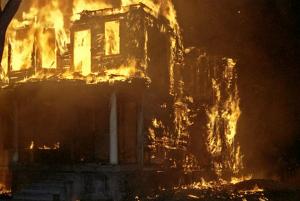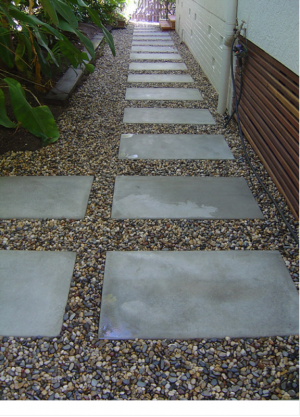Fire safety for the home garden
Firescaping is planning and planting your landscape to prevent or resist fires. If you have never thought about this before, you are not alone. Some planning could save property and lives if given consideration and effort.
Some plants are highly flammable, and some are not. Choosing to plant around your house foundation with plants that are not highly flammable is a smart thing to do.
Your outdoor garden has other elements besides plant choices one should consider for fires. Fireman Terrence Bayko of the Wilmington Fire Department said, “Mulch is also a huge issue we encounter in the early spring and summer. We've encountered plenty of ‘outside-in’ fires where mulch has auto-ignited and caught the vinyl siding of homes on fire.”
“Mulch and wood chips are constantly decomposing. Because of this decomposition, they generate heat. At the core of a mulch pile or mulch bed, especially when temperatures are high, the temperature can reach mulch's ignition temperature (150 to 200 degrees F). ‘Outside-in’ fires are fires that begin outside a structure and ignite the flammable material outside a structure, and eventually find their way inside via windows, openings for services and soffits,” said Bayko.
Spontaneous combustion can happen also in hot outdoor sheds in which flammable liquids are stored, or especially from oily rags. Fire planning must also include firewood piles and brush piles, both of which could quickly amplify a fire or spread it. Brush piles are good for wildlife but should not be located close to a house.
Outdoor grills and wood–burning firepits should be covered to prevent flying sparks, kept away from the house and on non-flammable concrete or stone surfaces.
Firefighters encourage low-flammability tall hedges to block flying sparks and baffle winds that increase with fires and spread them. Since tall hedges give privacy as well, they are a desirable landscape feature.
Firescaping expert Douglas Kent said, “Whether or not a plant will catch on fire, keep a fire going, and then propel a fire is determined by its physical characteristics. Less-flammable plants, those considered fire retardant or fire resistant, share certain physical characteristics. Getting to know these characteristics is fundamentally more important than remembering plants lists.”
Let us look at those characteristics. Deciduous plants are less flammable than evergreens. Broadleaf plants are less flammable than those with needle- and blade-like leaves. Moist, flexible leaves are less flammable than stiff, leathery leaves. Thick leaves are less flammable than fine or thin leaves. Plants that produce small amounts of litter are less flammable than those that produce a lot. Leaves with sap that looks thick, resinous or gummy white are more flammable than leaves that are just moist inside.
To simplify, consider narrow-leaved evergreens like pines, junipers, spruces, and stiff-leaved plants like hollies, to be highly flammable, and avoid planting them close to a house. Hedges and shrubs should have their litter removed regularly if close to a house. It’s best to cut back big/tall grasses close to a house once they dry out for the winter, becoming highly flammable.
The ideal fire-resistant house would have a couple feet of graveled bed around the outside wall. Extending 30 feet from a house, the garden zone should be landscaped with plants capable of withstanding flying embers and intense heat, having broad, fleshy, moist leaves. Trees should preferably be deciduous.
Any plant can catch on fire, and its condition is important. Plants that are over-aged, water stressed, diseased or poorly cared for are more flammable. Landscape maintenance is important to fire safety.
Fire-resistant shrubs for foundation planting could include hydrangeas, privet, photinia, camellia, azalea, rhododendron, roses, viburnum, and others. Ground covers could include ferns, lawn grasses, etc. Trees can include almost all deciduous, flexible-leaf, moist-tissued trees like Japanese maples and native trees like dogwood, oxydendron, redbud, fruit trees, etc. On the whole, larger trees like oaks , poplars, etc., are not good choices close to a house for many reasons other than fire danger.
Landscaping close to a house can include fleshy-leaved shrubs and soft-tissue perennial plants, with no more than a few small deciduous trees with branches pruned so they do not overhang the house. Keep a minimum 2-foot-wide gravel zone around the house for proper maintenance and to prevent mold growing on house walls, as well as to resist fire. Also keep the ground clean of flammable accumulated debris and mulch around the house.
Firescaping can be an important measure to protect your family and property. Like an insurance policy you hope you never need to use, with safety measures, firescaping and safety measures can give you peace of mind.























































